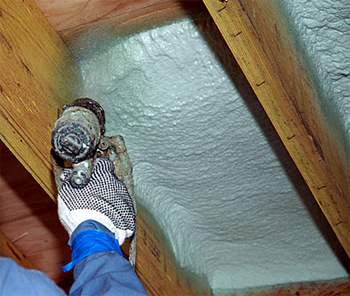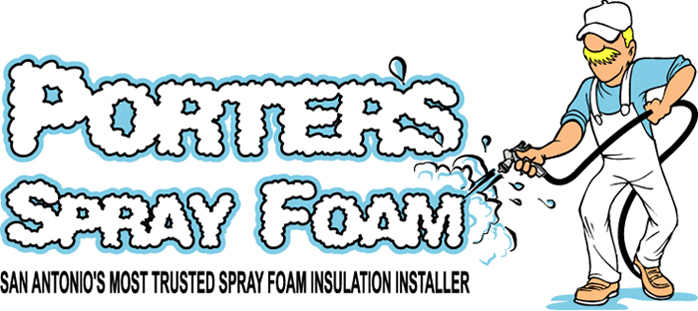
About Spray Foam Insulation
Spray Foam Insulation saves
You Money and Pays for Itself
Spray Foam Insulation saves on energy costs and lowers
utility bills. Spray Foam Insulation is used to seal the entire
“building envelope” of your home to prevent air and moisture
infiltration. The US Department of Energy (DOE) studies show that 40% of
your home’s energy is lost due to air infiltration. This air infiltrates
the home in the form of drafts through walls sockets, windows and
doorways. Often times no expensive building wrap or additional
vapor protection is required during construction when using Spray Foam
Insulation, saving money yet again.
High R-Value
Sprayed polyurethane foam has an aged R-value of
approximately 6.0 per 1 inch thickness (depending on the particular
formulation and application, higher values have been achieved), enabling
it to provide more thermal resistance with less material than any other
type of commercial insulation material. Spray Foam Insulation systems
are frequently used to insulate and protect a wide variety of
residential, commercial, and industrial buildings.
Prevents Air, Moisture and
Gas Infiltration
Studies have shown that as much as 40% of a building’s
total energy loss is due to air infiltration. Traditional fiberglass
insulation is only stapled, or placed into the wall cavities and does
not seal the stud and wall cavities from end to end, or top to bottom.
Air infiltration can pass through these gaps, making it far less
efficient than Spray Foam Insulation. Spray Foam Insulation not only
adheres to, but forms to the walls and floors to create a tight seal and
insulating barrier that stops this air leakage. Spray Foam Insulation
also boasts the highest R-value per inch than any other commercial
material, (upwards of R-7.0, compared with Fiberglass at R-3.5) making
your home more comfortable and less expensive to heat in the winter, and
cool in the summer.

Products used by Porter's Spray Foam
Open-Cell Spray Foam Insulation
*Most
common in home insulation
Open-cell spray foam insulation is spray applied in a liquid, expanding
to 100 times its volume. Once applied, the product cures within seconds,
filling every crack and gap. The tiny cells expand at such a rapid rate
that they break apart and fill with air, creating a soft, almost spongy
end product. The rapid expansion of open-cell foam creates a perfect
air-tight seal using less material than closed-cell foam, thereby
creating a lower cost per R-Value.
R-value of 3.7 per inch
Lowest cost among all types of foam
Excellent noise reduction and sound control
Common Applications
·
Stud walls
Attics
Air Sealing
Sound Control
Closed Cell Spray Foam Insulation
Closed-cell foam insulation is a more slowly
expanding product, resulting in an expansion of approximately 40 times
its original volume. The closed-cell nature of this type of foam creates
a tightly packed cell structure that is more rigid and dense than
open-cell foam, giving closed-cell foam a higher R-value per inch. With
closed-cell being four times the density of open-cell foam, the cost per
R-value is higher for closed-cell foam than that of open-cell foam
insulation.
R-Value of 6.8 per inch
Enhances structural integrity
Qualifies a vapor retarder at 2”
Common Applications
- Attics, Basements and Crawl Spaces
Stud and Exterior Walls
Metal Buildings
High Moisture Areas

